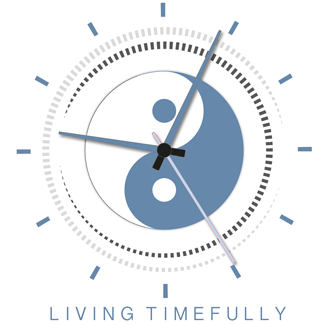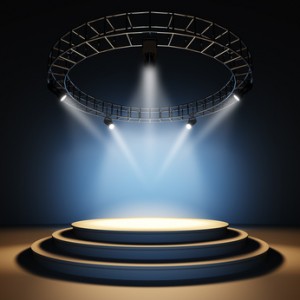by Tom Evans | Jan 27, 2012 | Expanding
 The English language, as rich as it is, is somewhat lacking in one major respect. I propose that it is missing something to give it some real zest.
The English language, as rich as it is, is somewhat lacking in one major respect. I propose that it is missing something to give it some real zest.
The Greek language has 24 letters and starts with alpha and ends with omega. It also conveys the notion that the alpha and omega are implicitly linked and that, along with all the letters intervening, they form a wheel or circle.
This cyclical nature can also be seen in the Major Arcana of the Tarot. The cards 1 to 21 are linked by the zero card of the Fool and come back on themselves thus completing the Wheel of Life. Even Rotary Clubs were seeded by this notion although many of the members would be horrified if they knew. Just write the letters of the Tarot in a circle to see how the word itself too has embedded rotation in it.
Each of the Tarot cards has correspondences with the 22 letters of the Hebrew alphabet, starting with Aleph and ending with Tav. It is no surprise then that the Hebrew language has a cyclical nature too.
Even in packs of playing cards, the Ace can be high or low, connecting as it does the King and Two together. The Earth is round(ish), we orbit the Sun in an ellipse, galaxies are spiral and revolve around a central super-massive black hole. Circles and cycles are everywhere in nature.
So why is our English alphabet so boringly linear? When you get to the end of a dictionary or telephone directory, there is nothing to encourage you to go around again. Even A to Z maps are mere indexes and lists of street names with no rhyme, reason or interconnectivity.
When pointed out, this is an obvious notion. What’s to be done about it? Should we even care?
The reason why we have an alphabet with 26 letters that came from languages with 24 and 22 letters respectively is the stuff of a PhD thesis. I will leave the research into its evolution to other more worthy and knowledgeable scholars. I suspect though that the problem was seeded by the rise of a left-brained dominant society where ‘man’ kind was bent on mastering the elements and taking control over nature – not working with it.
By way of example, when Julius and Augustus Caesar were in power, they wanted months named after them. As a result, September to December were rudely pushed out of the way and made to be the ninth to twelfth months respectively. Any student of even rudimentary French will know their names are derived from the numbers seven to ten. Julius got July named after him and Augustus, August. Some days were even robbed from February to make them months of equal length. Such is the power of ego over the natural course of things.
In the same way, the elongation of our alphabet has caused us to loose the connective-ness of things. Even the name alphabet related to A followed by B – alpha by beta.
So let’s zest it all up a bit and throw the proverbial cat amongst the pigeons. I don’t propose we go backwards and ditch letters in order to get back to earlier rose-tinted times. Onwards and upwards is the clarion call.
What’s needed is a 27th connecting letter between A and Z and a new name for the sequence of our letters.
I will propose something for the latter and send out a message to the Universe (well the readers of this article) to provide suggestions for the former by way of Comments below.
By giving our language another letter, we extend it and augment the Universal Thought Pool.
So what do you think the 27th letter could be? A squiggle, a sign, a glyph – answers and suggestions by way of Comments below, a Tweet or a Facebook post.
And now, let’s sort out our alphabet and give it a new name and some added zest. Like all these things, the answer is trivial when you think about it and staring us in the face. Let’s call it the AlphaZed !!
What goes around around comes around.
by Tom Evans | Jan 26, 2012 | Scribing
 If you haven’t been sitting in a cave, you may have noticed the world seems to have gone Digital all of a sudden. We have a Digital Economy, a Digital Minister and even the new self-proclaimed job title of Digital Coach.
If you haven’t been sitting in a cave, you may have noticed the world seems to have gone Digital all of a sudden. We have a Digital Economy, a Digital Minister and even the new self-proclaimed job title of Digital Coach.
Many of the people who use the word carelessly don’t have a clue about binary or hexadecimal mathematics or the difference between a bit or a byte.
These so-called digital initiatives, while all laudable, are somewhat missing the fact that the Internet is essentially an analogue system that operates on a digital backbone.
Let me explain …
This digital backbone of data transmission and storage controlled by software that operates on digital processors has hardly changed in essence since the Internet’s forefather of the Arpanet in the ’60s. It’s somewhat surprising then that everything’s suddenly gone Digital – especially when all our interactions and all the exciting developments are mainly happening in the analogue domain.
In the Web 2.0 world especially, where user generated content is the contribution currency, all the inputs and outputs are analogue.
These words that I am typing are analogues of my thoughts although, maybe somewhat ironically, input by my digits.
If I record a podcast, I am storing a representation of a waveform of analogue sound waves modulated by my voice box.
Still and moving images are an analogous simulacrum of the light reflecting from objects in view of the camera.
The screens on which we write, interact, read and view are all analogue devices – especially e-ink displays.
The loudspeakers and earphones are all analogue too.
If you take the iPhone what you have in your hand is a device packed to the gunnels with analogue transducers all controlled by digital processing. It responds to touch, voice, image, xyz position and even acceleration.
Digits although important are just one component, not the total picture by any means.
I have no objection or axe to grind here … merely to point out that a spade should be called a spade or holes might be dug from which the true picture can’t be seen or the trees seen from the wood.
Afterthought: With the widespread adoption of phones and tablets where touch is the primary input, there could be merit in joining a Digital Gym where our fingers get a workout to keep them dexterous and avoid RSI of the forefinger! Now there’s an idea for an app …
by Tom Evans | Jan 3, 2012 | Timing
 This is probably the trickiest of all the blocks in this this series so far that stop people being creative as it’s the most subjective.
This is probably the trickiest of all the blocks in this this series so far that stop people being creative as it’s the most subjective.
For example, one person might love your writing, music or art and another may loathe it. The former will appreciate your talent and the the latter think you don’t possess an ounce of it.
So one simple way to boost your perception of your talent is just to find the people who like your stuff. When you do find them, watch out for sycophants and the perils of an ego that comes from having a fan base – remember it might be temporary.
When you get reviews, remember to thank people for them.
From an objective perspective, there’s a bunch of really practical things you can do to improve and hone your talent.
The first three might not normally be associated with the arts but they are as follows:
- to get regular exercise
- to eat the right things
- to breathe using your diaphragm
Each of these increases the nutrients reaching your brain which in turn facilitates increased interactivity between your neurons. By the way, the exercise doesn’t have to be strenuous, a brisk walk with diaphragmatic breathing is enough – this is why I recommend writers should be dog owners. And when you walk, if you can, look up not down – it makes a huge difference.
Now onto honing your talents themselves … here’s my top seven tips
- Practice … and then practice some more
- learn how to Mind Map (properly)
- create something each day
- have an Artist’s Date per week – see Julia Cameron’s Artist’s Way site
- when you read, see or hear something you like, spend a little thinking about what you like about it
- then plagarise, copy and emulate a style you like … making your own fusion along the way
- don’t hide your reviews away, pin them on your wall, post them on your web site, Tweet them
Finally remember the best way to hide your talent is not to create anything at all … and that your talent is a gift and natural endowment, not to be hidden under a bushel or suppressed by any of the fears in this series.
In any case, it should be remembered that these fears are only there to give us the indication that there’s something we need to tackle and embrace.
by Tom Evans | Jan 2, 2012 | Timing
 One of the most common complaints you hear nowadays is that there is not enough time.
One of the most common complaints you hear nowadays is that there is not enough time.
The world is speeding up – we are being bombarded by TV, news, social media – how is it possible to keep up?
Well it’s a common misconception that the march of time and it’s ticking clock is both fixed and immutable.
You hear people saying things like, “You can’t change the past” and “There are simply not enough hours in the day.”
Both these statements are not necessarily true.
It’s also said that, if you want something done, give it to a busy person. I even heard someone say once that they didn’t have enough time to read a time management book !!
Well there’s two books I recommend highly both that take a different approach, mentioned at the bottom of this blog … but even they don’t really show how time can be bent, managed and stretched.
It’s all in mind
Now this might seem far fetched, or in the realms of Doctor Who or Back to the Future, but scientists are coming to the conclusion that our reality – our space and time – are linked to our consciousness. In fact, it’s more accurate to say that it’s our very consciousness that actually creates our reality and space and time. So all you need to do to change time is to make a change in your consciousness.
A fly and an elephant both perceive time differently to us … and I for one have noticed a difference in peoples’ cognitive reaction time. Have you ever tried to swat a fly only for it to seem to know where you are about to strike? It’s nerve signals don’t have to travel as far as ours so its physiology and neurology means it reacts quicker.
I am sure you have heard about athletes who have been “in the zone” – a sort of timeless place – or perhaps you have had a light bulb moment where in less than a second, you get a flash of inspiration – a whole picture for a new idea. If you were able to MRI scan your brain at this moment, you would see both the right and left hemispheres light up in synchronism. For that split second you were Whole Brain (or even Whole Mind) Thinking. A brain scan would show that your brain was generating alpha and probably even theta waves.
It is now thought our left brain sits in space and time and our right brain everywhere and “every-when” else. By making our left brain go silent and work in harmony with our right, our perception of the speed of time changes.
Now you can access this state while meditating. When I mention this to people, their first reaction is that they don’t have time to meditate. I know it sounds counter-intuitive but I can testify that 20-30 minutes meditation before any creative session will deliver not only the time back by a factor of 3 or 4 but also produce the most sublime output that appears to have come from nowhere.
“But I can’t make my mind go quiet,” is normally the next protest swiftly followed by, “I’d like to meditate but I don’t have time to learn how.”
Well, if you hear yourself saying this, help is now at hand. You don’t need necessarily to enter an ashram for two months. Although, if you did, it might well be time well spent …
Have a listen to this audio track to learn a routine you can use anytime and anywhere – great also for getting back to sleep in the early hours – but not as one client of mind did for listening to while driving !!!
By practicing getting into this state while your eyes are open, you will find time changes its speed … and you will get more done in less time !!!
Create as much time as you need and get more done

Recommended Reading
If what I’ve written above it just too whacky and you just want to better manage your day and “claw back” time, then read Time Management for Dummies by Clare Evans (no relation).
I also recommend getting hold of a copy of Steven Taylor’s excellent book called Making Time – it explains in some detail how consciousness and time are interrelated and how you can start to control time to your advantage.
by Tom Evans | Jan 1, 2012 | Timing
 This fear is one that can be the most debilitating. Say for example you are an author and you’ve cracked all the other fears and finished your book.
This fear is one that can be the most debilitating. Say for example you are an author and you’ve cracked all the other fears and finished your book.
You may even have it printed and published … but maybe it’s not selling and you’re struggling to promote it … and yourself.
This is a fear that I have experienced first hand. One of the reasons I discovered about why it affected me so much was that when I was the most financially successful in my life with two businesses, this was when I was also the most stressed.
So I directly equate success with stress and used my creative mind to avoid success at all costs.
The signs that this is happening in your life are:
- You jump on to the next project without really finishing off the last thing you were working on
- You work on behalf of other people before you get on with your own stuff
- You become a ‘busy fool’
And I am proud to say I have all these T-shirts.
Strategies for Getting over the Fear of Success
1. Redefine what success means to you – it doesn’t have to be about the financials and, of course, being successful without the associated stress is a success in its own right
2. Get in the habit of celebrating all milestones no matter how small and in what ever manner you feel, e.g. every review I get for my books, I proudly share on Twitter and Facebook
3. Have a listen to this short visualisation on Becoming Fear-less
 The English language, as rich as it is, is somewhat lacking in one major respect. I propose that it is missing something to give it some real zest.
The English language, as rich as it is, is somewhat lacking in one major respect. I propose that it is missing something to give it some real zest.


 This is probably the trickiest of all the blocks in this this series so far that stop people being creative as it’s the most subjective.
This is probably the trickiest of all the blocks in this this series so far that stop people being creative as it’s the most subjective.

